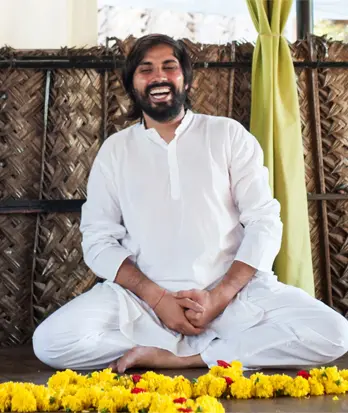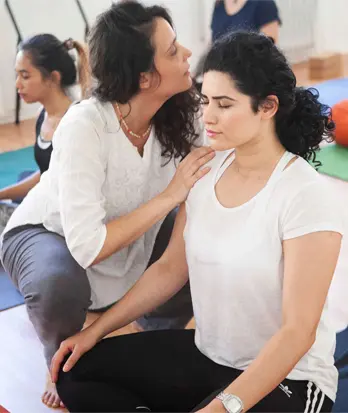In recent years, yoga has transcended its ancient roots to become a global phenomenon, praised for its numerous physical, mental, and spiritual benefits. If you’re passionate about yoga and have found it transformative, you might be considering taking the next step: becoming a yoga teacher. This journey involves more than just mastering poses; it requires a deep understanding of the philosophy, anatomy, and pedagogy of yoga. Here’s a comprehensive guide on how to become a yoga teacher.
1. Deepen Your Practice
Before you can teach yoga, you need to have a strong personal practice. This means regularly attending classes, exploring various styles of yoga, and possibly finding a mentor or teacher whose style resonates with you. Understanding the nuances of different asanas (poses), pranayama (breath control), and meditation techniques is crucial.

2. Choose a Yoga Style
Yoga is diverse, with styles ranging from the dynamic flow of Vinyasa to the precision of Iyengar, the heat of Bikram, or the restorative nature of Yin. Choosing a style that you are passionate about and that suits your personality is essential. This will also help in selecting the right teacher training program later on.
3. Enroll in a Yoga Teacher Training Program
To become a yoga teacher, you need formal training. Most aspiring yoga teachers start with a 200-hour Yoga Teacher Training (YTT) program, which is often certified by Yoga Alliance, the largest nonprofit association representing the yoga community. These programs cover essential aspects such as:
Asanas: Learning the correct alignment and variations of poses.
Anatomy: Understanding the body’s mechanics to prevent injuries.
Philosophy: Studying key texts like the Yoga Sutras of Patanjali.
Teaching Methodology: Developing effective communication and instructional skills.
Many programs offer immersive retreats, online courses, or weekend modules, catering to different schedules and learning preferences.
4. Gain Teaching Experience
After completing your YTT, start teaching. This could be through community classes, friends, and family, or even volunteer opportunities. Practical experience is invaluable in building your confidence and refining your teaching style. Each class you teach will bring new insights and challenges, helping you grow as an instructor.

5. Get Certified and Registered
While certification from a YTT program is essential, registering with a recognized organization like Yoga Alliance can enhance your credibility. This registration shows that you meet certain educational standards and adhere to a professional code of conduct, which can be reassuring for potential students and employers.
6. Create Your Teaching Persona
Develop your unique teaching style and persona. This involves reflecting on what you bring to your classes that is uniquely yours, whether it’s a particular focus on alignment, a knack for integrating yoga philosophy into sessions, or a special talent for creating a calming atmosphere. Your personality and passion are what will attract and retain students.
7. Build Your Business Acumen
Teaching yoga is not just about the practice; it’s also about building a sustainable career. This involves understanding the business aspects of running classes, such as:
Marketing: Using social media, creating a website, and networking to attract students.
Finance: Managing class pricing, expenses, and possibly renting studio space.
Continued Education: Keeping up with the latest trends, attending workshops, and advancing your training with a 300-hour program or specialized courses.

8. Stay Committed to Learning
Yoga is a lifelong journey. To become a truly inspiring yoga teacher, you need to stay committed to your own growth and learning. Attend advanced workshops, seek feedback from your students, and stay curious about new techniques and philosophies.
Understanding Yoga Instructor Certification
A yoga instructor certification is an official credential that signifies a person has undergone specific training and meets the standards required to teach yoga. This certification is typically granted by a recognized yoga school or institution after the completion of a structured program. These programs are designed to equip aspiring instructors with the necessary skills, knowledge, and experience to teach yoga safely and effectively.
Types of Yoga Instructor Certifications
There are various types of yoga instructor certifications, each catering to different levels of expertise and styles of yoga:
200-Hour Certification: This is the most common and serves as the foundational certification. It covers essential aspects of yoga, including postures (asanas), breathing techniques (pranayama), anatomy, teaching methodology, and philosophy.
300-Hour Certification: Building on the 200-hour certification, this advanced training delves deeper into yoga practices and teaching techniques. It is often pursued by those looking to refine their skills and specialize in specific areas.
500-Hour Certification: Combining the 200-hour and 300-hour programs, this comprehensive certification provides extensive training and is ideal for those committed to a long-term career in yoga instruction.
Specialty Certifications: These certifications focus on particular yoga styles or populations, such as prenatal yoga, children’s yoga, yoga therapy, and more. They are perfect for instructors who wish to diversify their expertise.

The Certification Process
1. Choose a Recognized Program
Selecting a reputable yoga school or institution is the first step. Look for programs accredited by well-known organizations such as the Yoga Alliance, which sets high standards for yoga teacher training worldwide.

2. Complete the Training
Yoga instructor certification programs typically include a mix of theoretical and practical components. Expect to engage in intensive training sessions, workshops, and teaching practice. The curriculum often covers:
Asanas: Detailed instruction on various postures and their alignments.
Pranayama: Breathing exercises to enhance respiratory function and mental clarity.
Anatomy and Physiology: Understanding the body’s mechanics to prevent injuries.
Yoga Philosophy: Studying ancient texts and principles that form the foundation of yoga.
Teaching Methodology: Techniques for effective teaching and class management.
3. Hands-On Teaching Experience
Practical teaching experience is a vital part of the certification process. Trainees are often required to lead classes under supervision, receiving feedback to improve their teaching methods.
4. Assessment and Certification
After completing the required training hours and practical assessments, candidates must pass written and practical exams to earn their certification. Successful candidates are then recognized as certified yoga instructors.
Benefits of Yoga Instructor Certification
Credibility and Trust: Certification enhances your credibility as an instructor. Students are more likely to trust and choose instructors who are certified by reputable organizations.
Knowledge and Skills: The rigorous training equips you with comprehensive knowledge and skills, ensuring you can teach safely and effectively.
Career Opportunities: Certified instructors have access to a wide range of career opportunities, from teaching in studios and gyms to offering private sessions and workshops.
Personal Growth: The certification journey is not just professional but also personal. It deepens your own practice and understanding of yoga, fostering personal growth and self-awareness.
Networking and Community: Joining a certification program connects you with a network of like-minded individuals, creating a supportive community of peers and mentors.
For More Info:-
ashtanga yoga teacher training
become a certified yoga instructor
yoga teacher course
yoga teacher course online
yoga teacher training
yoga instructor
yoga alliance certification
yoga trainer certification
Certified yoga instructor course
yoga training certification
ytt